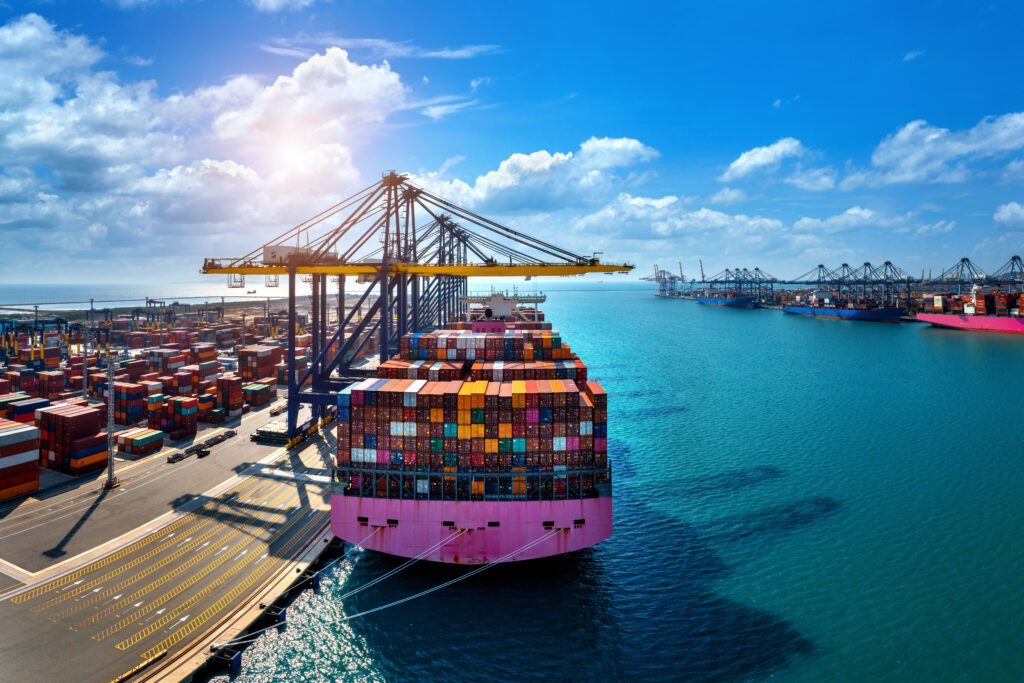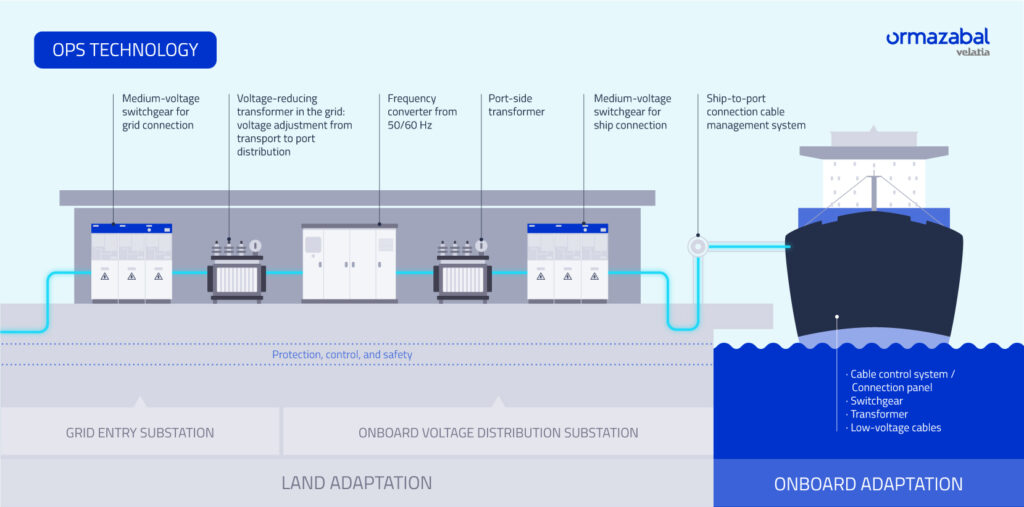Blog
Port electrification: what is and how does it work?
Maritime transport is heading towards zero emissions, and port electrification plays a crucial role

The importance of maritime transport in our daily lives is perhaps underestimated by the vast majority of us. However, humans have used the world’s great sea and river routes to their advantage since time immemorial, and this has been crucial for the progress of our societies. It is difficult to imagine our world without maritime routes that allowed the transportation of essential raw materials, along with people, from one side of the globe to another. Whether it was the Greeks, Egyptians, Carthaginians, Chinese, Romans, Portuguese, Spanish, English, French, or many others, each of the great empires had their backbone in the use of ships for trade, which facilitated the drive towards globalization we know today. The relevance of maritime transport for our society, explained by its high efficiency, has only increased to this day. In fact, 90% of globally distributed goods are transported through seas and oceans. So, you might wonder, where does port electrification fit into this equation? Let’s delve into it.
The enormous figures associated with maritime transport—consider that while you’re reading this article, 20,000,000 containers are being transported by 5,000 merchant ships across our seas—are also significant in terms of environmental impact. According to Transport & Environment, this sector is responsible for emitting 1,000 million tons of CO2 (3% of global emissions) and is projected to increase its impact by 50% by mid-century if alternative measures are not implemented. Among these measures, which include replacing traditional fuels with renewable energy alternatives such as green hydrogen, is the crucial electrification of ports. Ports are responsible for receiving the goods and people that ships move from one place to another.
Why is port electrification necessary?
Contrary to what we might think, a ship’s activity does not stop when it arrives at a port; it actually increases significantly to fulfill its mission and set sail on the seas once again. When a ship docks, it needs to maintain its power systems to ensure its operation while the onboard personnel unload valuable cargo or help passengers disembark. This energy is generated by auxiliary systems that keep these small floating cities operational for their crews. However, this incurs a significant cost in terms of emissions of harmful gases such as sulfur oxides, nitrogen oxides, carbon dioxide, and particulates. This poses a risk to the populations surrounding port facilities and adds to the already substantial atmospheric footprint of maritime activities. Transport & Environment estimates that the impact generated by vacation cruise ships alone is equivalent to the emissions of 1 billion cars.
Separate from emissions are the disturbances caused by the constant noise and vibrations from the internal combustion generators that remain in operation to ensure the power supply for ships. This is something experienced by populations near ports, where the constant noise and vibrations can cause disruptions.
Now, there is a technology (with a long history in small-scale recreational and military applications) that ensures the operation of a crucial sector and finally resolves the problems associated with ship docking: port electrification.
This technology is based on providing a secure and stable electrical connection to ships while they are docked in ports. This is known as On-Shore Power Supply (OPS), which allows these ships to be powered from the port itself without the need for their internal combustion engines to be running, eliminating almost all noise, vibrations, and emissions harmful to the nearby populations of port facilities. This OPS technology encompasses the supply of electricity to ships from land at both low voltage (400 V / 480 V) and high voltage (6.6 kV / 11 kV).
Therefore, by 2030, green ports will need to be a reality in all European countries, as mandated by the European Union’s environmental regulations and its commitments to reduce emissions. The EU itself estimates that the volume of goods handled by European ports will increase by 50% in 2030 compared to the amount recorded in 2001 when 3.7 billion tons were reached. This increase, if not accompanied by a change in operations, will further raise the carbon footprint of this type of activity.
How does an OPS solution work?

For the electrical interconnection of ships to work perfectly, infrastructure is required to ensure the energy supply to these ships at all times. Depending on the type of ship, the existing electrical infrastructure of a port may not be sufficient to meet its needs. For instance, a large cruise ship’s daily consumption can reach a considerable 10 to 12 MW, compared to the 2-4 MW required by a ferry. Ports must have their own substation, which serves as the entry point for the extra energy needed to provide the service.
From the substation, tailored to the consumption needs of the port itself, electrical energy is distributed through a dedicated network that reaches each of the connection points on the docks. For this purpose, energy passes through medium-voltage equipment, including medium-voltage cells (configured to the port’s specific requirements) and transformers to reduce network voltage for consumption. The energy is further processed by a frequency converter to match the ship’s requirements and then adapted again through a medium-voltage transformer. Finally, it is delivered to the ship through a new set of distribution cells that protect the electrical systems while the ship receives the necessary energy for its operation. The connection is made at the pier through plug-in systems.
With the technology and expertise of leading electrical grid companies such as Ormazabal, port electrification will become one of the fundamental pillars of the transition in maritime transport, reducing atmospheric emissions and taking solid steps toward the decarbonization of our economy. Can we help you achieve this?